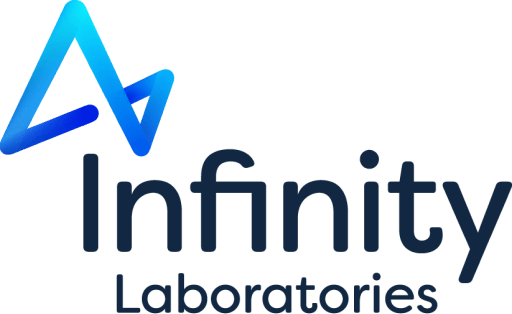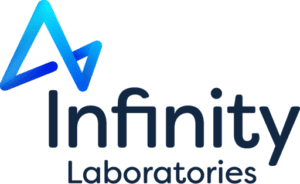
Wet Chemistry Testing
Wet chemistry testing, a set of traditional laboratory techniques characterizing elements in a liquefied sample, is foundational for product understanding in the life sciences industry. While wet chemistry tests are well established and have been used for decades, Infinity Laboratories’ network of analytical laboratories employs modern methods and state-of-the-art instrumentation to offer precise results and reliable data.
Wet chemistry testing, a set of traditional laboratory techniques characterizing elements in a liquefied sample, is foundational for product understanding in the life sciences industry. While wet chemistry tests are well established and have been used for decades, Infinity Laboratories’ network of analytical laboratories employs modern methods and state-of-the-art instrumentation to offer precise results and reliable data.
Wet Chemistry Techniques
Analytical Method Development & Validation
An in-depth comprehension of products’ chemical and physical characteristics is crucial in ensuring their quality and patient safety. Infinity specializes in developing analytical methods across a diverse range of techniques to understand your drug product using advanced instrumentation. Additionally, we offer services for validating methods, whether our expert team, your internal team, or collaborative partners devise them.
Wet Chemistry Testing Services
Infinity offers comprehensive wet chemistry testing services to characterize drug products based on standards set by the world’s leading standards organizations, including United States Pharmacopeia – National Formulary (USP-NF), European Pharmacopoeia (EP), and Japanese Pharmacopoeia (JP). While we offer comprehensive compendial testing, some common analyses include:
Arsenic
Arsenic
Standard: USP <211>
Test to determine the presence of trace amounts of arsenic (As). This chapter describes four analytical procedures for evaluating the levels of arsenic (As). Use Procedure 1, Procedure 2, Procedure 3, or Procedure 4 as indicated in the individual monograph. Procedure 3 or Procedure 4 can be used in all circumstances, provided that suitability is demonstrated by meeting the Requirements for Procedure Validation.
Bulk and Tap Density
Bulk and Tap Density
Standard: USP <616>
Determination of bulk density — expressed in grams per mL (g/mL) or (1 g/mL = 1000 kg/m3) — factors the density of powder particles and the spatial arrangement of particles in the powder bed. Bulk density is found by 1) measuring the volume of a known weight of powder sample, generally measured by passing it through a sieve into a graduated cylinder 2) measuring the mass of a known volume of powder that has been passed through a volumeter into a cup, or 3) a measuring vessel.
Carbonizable Substances
Carbonizable Substances
Standard: USP <271>
Generally, the test adds the specified quantity of the substance, finely powdered in solid form, in small portions to the comparison container, which is made of colorless glass resistant to the action of sulfuric acid and contains the specified volume of sulfuric acid T3.
Chloride and Sulfate
Chloride and Sulfate
Standard: USP <221>
Test for use where limits for chloride and sulfate are specified in the individual monographs.
Conductivity
Conductivity
Standard: USP <645>
Tests to determine electrical conductivity, one of four critical water quality attributes, for purified water and water for injection. The electrical conductivity of water can be defined as the measure of the ion-facilitated electron flow through that sample.
Congealing Temperature
Congealing Temperature
Standard: USP <651>
A helpful test for identifying the presence of impurities by determining the temperature at which a substance passes from the liquid to solid state upon cooling. While pure substances have a well-defined freezing point, mixtures generally freeze over a range of temperatures, and the congealing temperature is a valuable index of purity.
Heavy Metals
Heavy Metals
Standard: USP <232>, USP <233>
USP <232> specifies limits for the amounts of elemental impurities in drug products, and USP <233> describes acceptable analytical procedures for evaluating elemental impurities.
Lead
Lead
Standard: <251>
The imposition of stringent limits on the amounts of lead (Pb) that may be present in pharmaceutical products has resulted in the use of three methods, of which Procedure 1, set forth in this chapter, depends upon extraction of lead by solutions of dithizone and procedures 2 and 3 determine lead by ICP-OES.
Loss on Drying
Loss on Drying
Standard: USP <731>
This test determines the amount of volatile matter driven off under specific conditions.
Loss on Ignition
Loss on Ignition
Standard: USP <733>
Loss on ignition is used to determine the percentage of material that is volatilized and driven off under specified conditions.
Melting Range
Melting Range
Standard: USP <741>
Melting point (MP) determination is a raw material and drug product characterization assay. Most substances exhibit a melting transition, spanning the temperatures at which the first noticeable change of phase is detected to when no solid phase is detected. MP methods must be carefully selected to generate certifiable results for quality control and quality assurance.
Minimum Fill
Minimum Fill
Standard: USP <755>
Minimum fill tests guarantee that the quantity of substance placed into a container corresponds accurately to the measurement stated on the product’s label. These tests are primarily based on mass and are essential for products such as creams, gels, lotions, ointments, pastes, powders, aerosols, foams, and sprays.
Nitrogen Determination
Nitrogen Determination
Standard: USP <461>
Methods of the determination of nitrogen content in some organic compounds.
Particulate Matter
Particulate Matter
Standard: USP <788>
Identifies particulate matter in injections and parenteral infusions, other than gas bubbles, unintentionally present in the solutions.
pH
pH
Standard: USP <791>
pH measurements are characterization assays to determine or confirm pH levels for drug compatibility, quality control, and/or shelf-life stability concerns. For compendial assays, pH is the value measured by a properly calibrated, potentiometric sensor and measuring system.
Refractive Index
Refractive Index
Standard: USP <831>
Determines the refractive index, which can be defined as the ratio of the velocity of light in air to the velocity of light in the tested substance. The refractive index can be used for identifying substances and detecting impurities.
Residual Solvents
Residual Solvents
Standard: USP <467>
Methods to determine that residual solvents used or produced in the manufacture of drug substances or excipients or in the preparation of drug products do not exceed specified ranges. Residual solvents are organic volatile chemicals with no therapeutic benefit and must be removed to the extent possible for quality-based requirements.
Residue on Ignition
Residue on Ignition
Standard: USP <281>
The Residue on Ignition/Sulfated Ash test uses a procedure to measure the amount of residual substance not volatilized from a sample when the sample is ignited in the presence of sulfuric acid. This test is usually used for determining the content of inorganic impurities in an organic substance.
Specific and Optical Rotation
Specific and Optical Rotation
Standard: USP <781>
Many pharmaceutical substances, like some crystals and many pharmaceutical liquids or solutions of solids, are optically active. For appropriate substances, optical rotation assays are highly informative characterization assays and the best means for distinguishing optically active isomers from each other, making this test an essential part of identity and purity.
Specific Gravity
Specific Gravity
Standard: USP <841>
Specific gravity can be defined as the relative density of a substance comparative to water. Infinity’s specific gravity tests measure the density of the sample product at a specified temperature and the measurement of the density of water.
Total Organic Carbon
Total Organic Carbon
Standard: USP <643>
Total organic carbon (TOC) is an indirect measure of organic molecules present in pharmaceutical waters that can be measured as carbon. Organic molecules can be introduced to the water from purification and distribution system materials, biofilm growing in the system, and packaging sterile and nonsterile waters.
Titrimetry
Titrimetry
Standard: USP <541>
Titrimetry are quantitative analysis methods in which an analyte is determined based on its stoichiometric reaction with a reagent of established concentration.
Viscosity
Viscosity
Standard: USP <911>, USP <912>
Viscosity tests are liquid characterization methods that determine the subject’s resistance to flow. Infinity’s viscosity tests are used to determine the viscosity of a Newtonian fluid, which is a fluid with a viscosity independent of the rate of shear. Generally, viscosity is found by measuring the force (torque) acting on a rotor when it rotates at a constant angular velocity or rotational speed in a liquid.
Water Content
Water Content
Standard: USP <921>
Guided by USP 921, Karl-Fischer titration is used to determine water content in a variety of substances. Many life science products either are hydrates or contain water, and determining the water content is important in demonstrating compliance.

